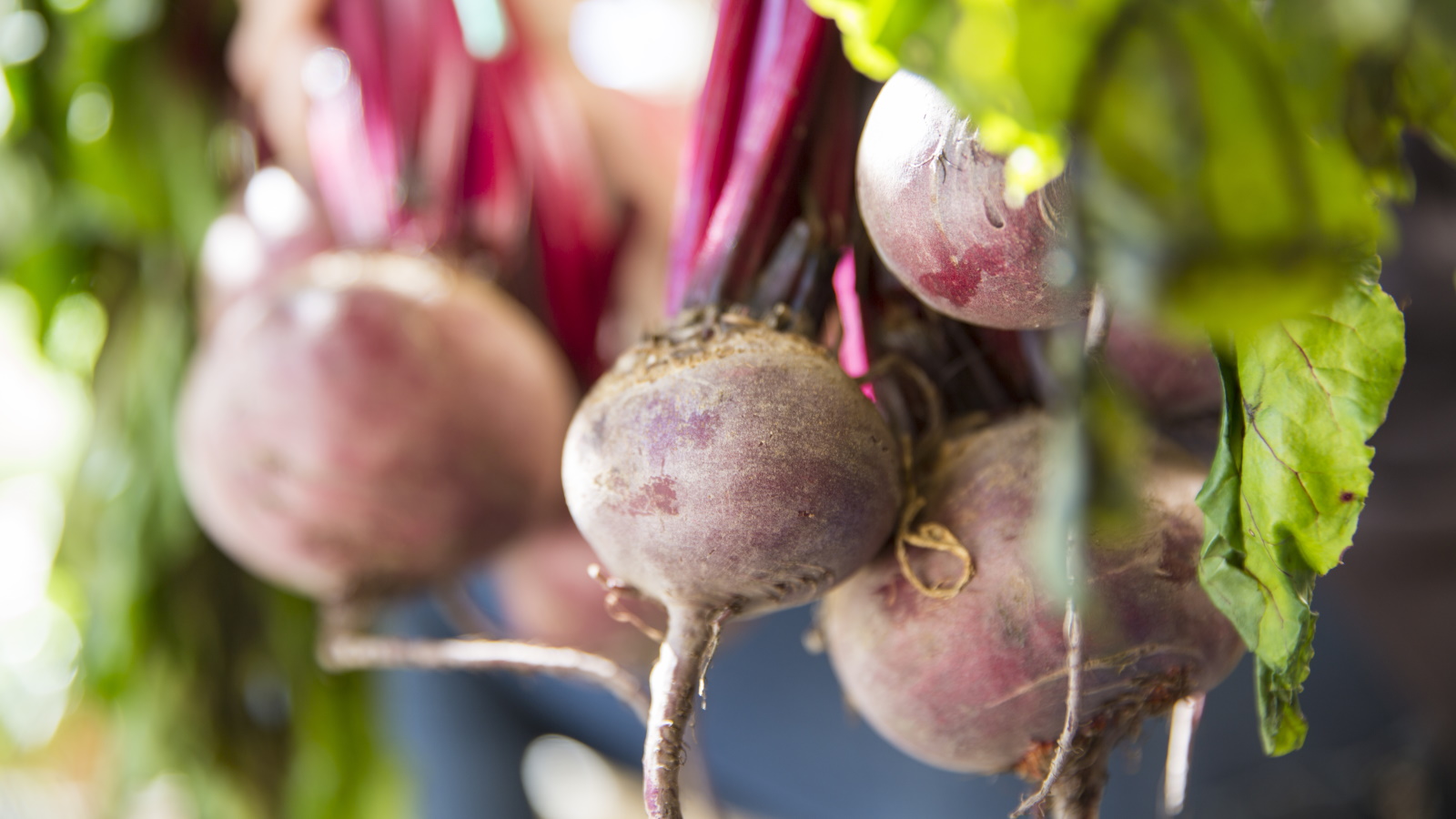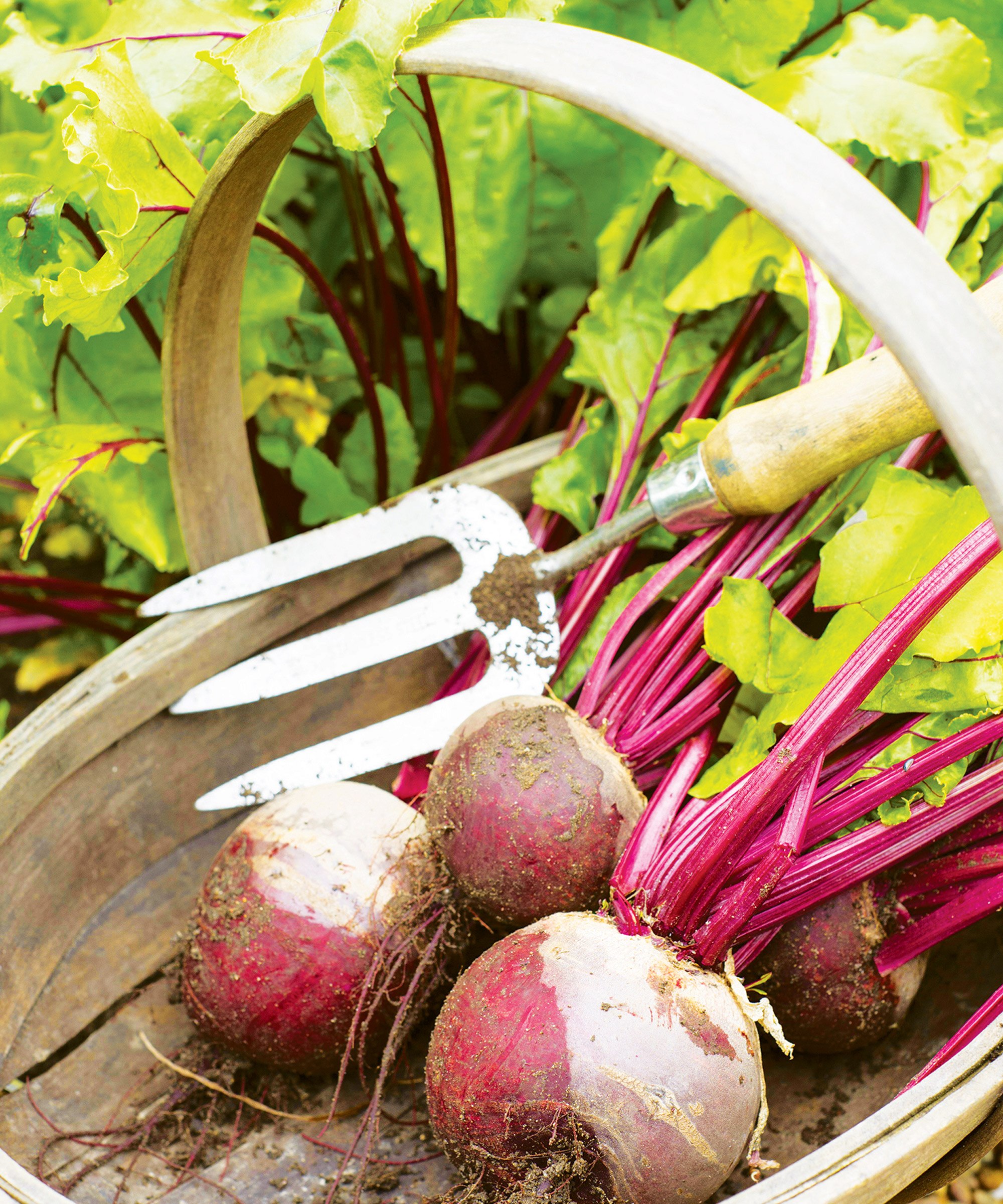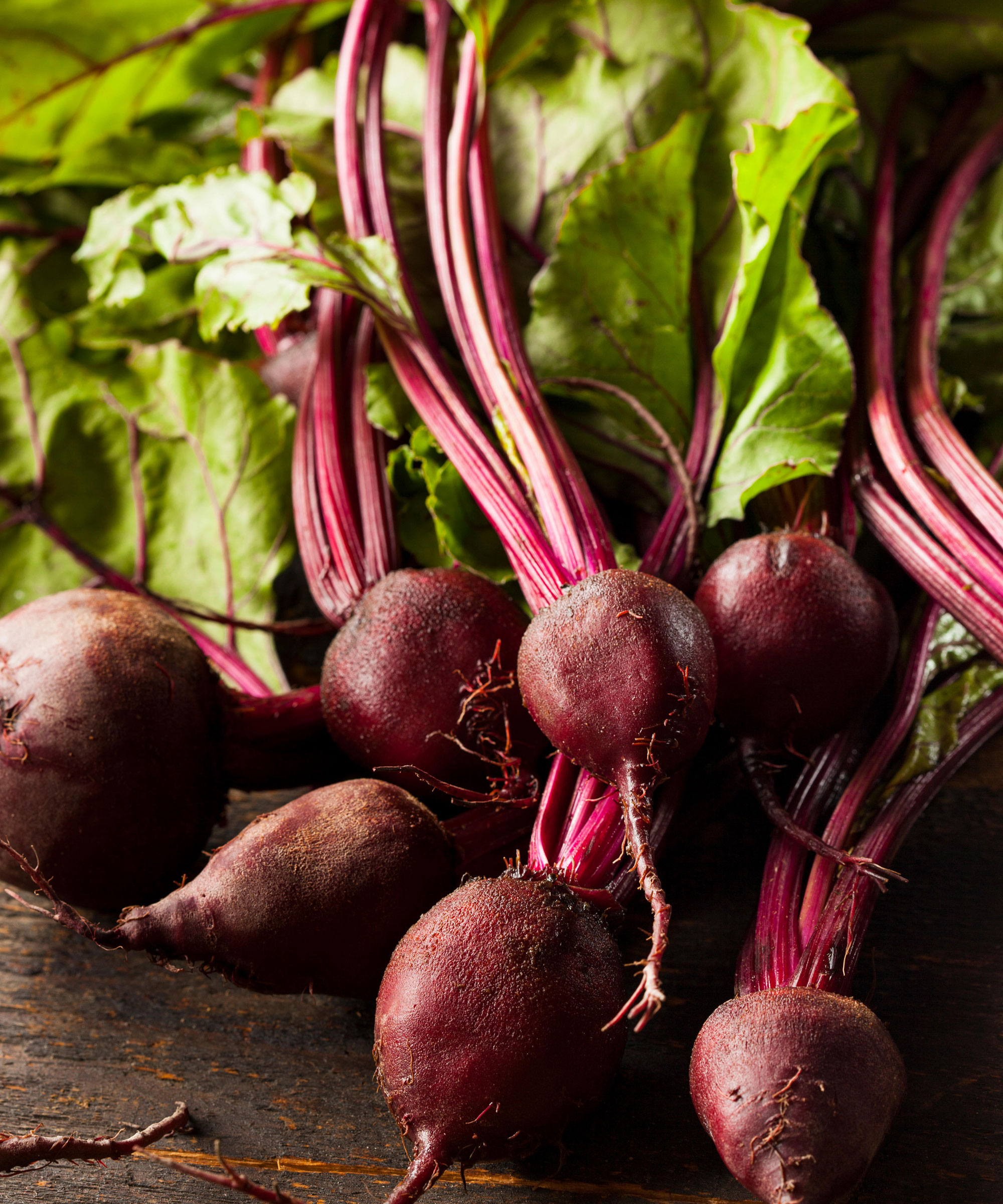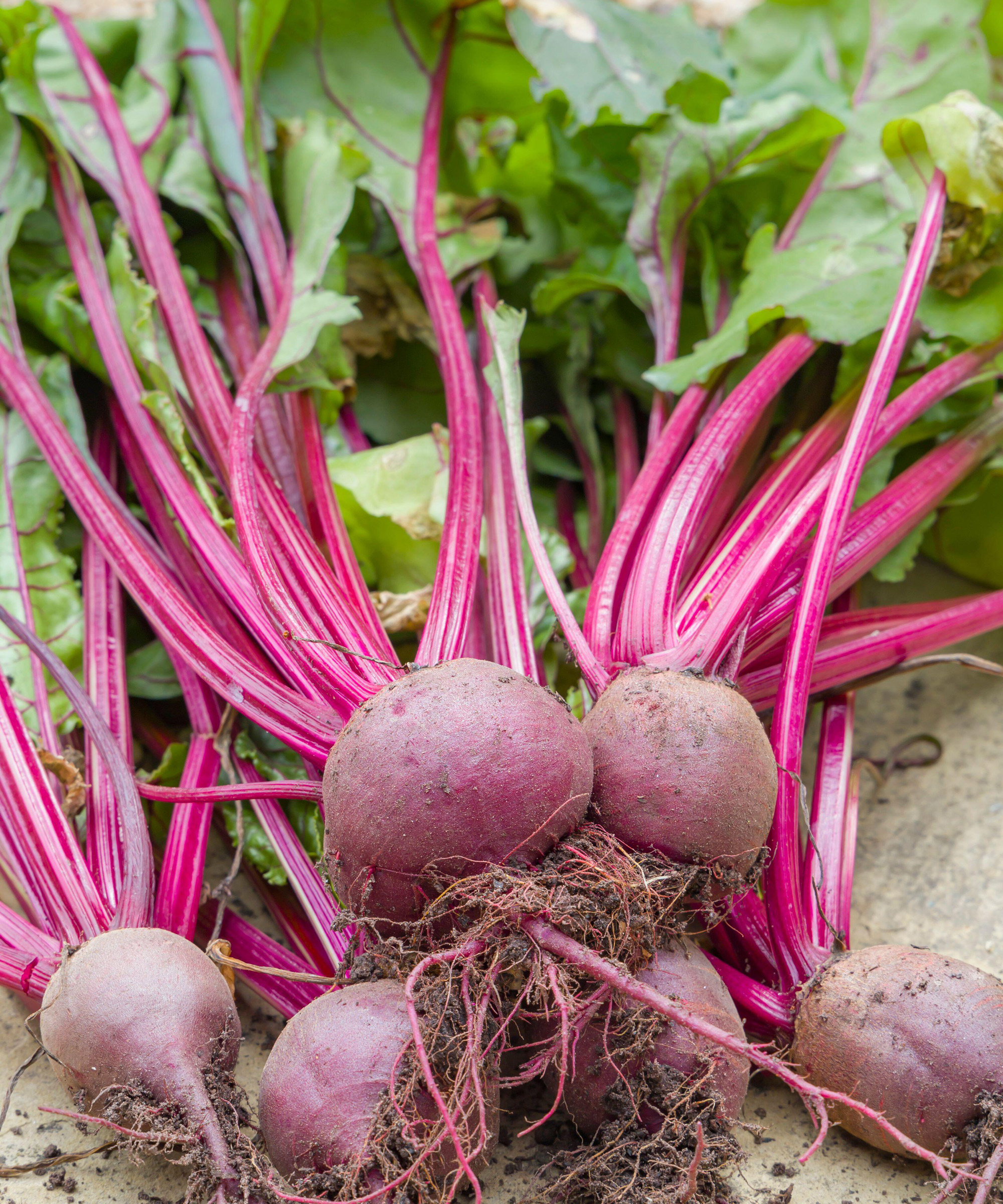Do you need to fertilize beets? Why you should feed for bigger and better harvests
Discover when and how often to fertilize beets - and what are the best beet fertilizers


Fertilizing might not be the first thing that comes to mind when growing beets. These popular root crops are very simple to grow, often it can be as easy as sowing the seeds and keeping plants watered to get a decent crop.
Feeding beets will make a big difference to the harvest you get. If you have struggled with disappointing beets, or want bigger and better beets this year, then actively thinking about fertilizing will help.
It is not difficult or time-consuming and most of the best fertilizers for beets are ones that you can also use on other flowers and vegetables around the yard. This may be an easy vegetable to grow, however, with a little bit more love and attention you can see a big improvement in your harvests.

Fertilizing beets helps roots develop to a great size
Do you fertilize beets?
Beets are heavy feeders that need a lot of water and nutrients to develop and produce a great harvest. It starts with planting beets in a rich and fertile soil type, then plants will thrive through the addition of extra nutrients throughout the growing season. Let's look at when and how often to fertilize beets and the best types of fertilizer for beets.
When to fertilize beets

It is recommended to fertilize beets for the best crops
Success starts with the soil, so fertilizing beets begins before you even sow seeds outdoors or start the vegetables indoors as transplants. A primary focus needs to be on making sure the soil where you are growing the beets - whether it is in the ground, in raised beds, or in containers - is fertile and rich in nutrients.
A soil test ahead of time can reveal the pH and nutrient make-up and show any deficiencies that need to be addressed and you can get simple-to-use kits to use at home - such as this soil test kit available at Amazon.
Adding organic matter such as compost, well-rotted manure, or leaf mold into the soil several weeks before planting beets will offer a myriad of benefits. It improves the soil structure, boosts the moisture retention levels, and provides a slow-release of essential nutrients as it breaks down.
Design expertise in your inbox – from inspiring decorating ideas and beautiful celebrity homes to practical gardening advice and shopping round-ups.
The best time to fertilize beets is when they are young. Fertilize beets around six weeks after planting the seeds, when they are around four inches tall, with an organic balanced feed. This provides a good mix of the nutrients that beets need to thrive, including nitrogen to grow leaves and phosphorus for the development of roots.
As for how often to fertilize beets, if you amend the soil with organic matter ahead of planting, a single feed of balanced fertilizer can be sufficient. To guarantee the best crop, plants may also benefit from a balanced liquid feed every 2-3 weeks through the growing season to help the roots develop.
How to choose fertilizer for beets

Fertilize beets throughout their growing season
An ideal fertilizer for beets is a balanced one that has equal parts nitrogen, phosphorus, and potassium. These three essential nutrients are shown on any packaging in the form of plant fertilizer numbers that shows the makeup of NPK, in the form of three numbers.
A typical balanced fertilizer will have an NPK ratio of 10-10-10 or 5-5-5. A balanced fertilizer is the best way to go, avoid using high-nitrogen fertilizer as this can focus the growth of the green leafy tops at the expense of the development of roots.
It is important to only ever use fertilizers at the recommended rates. Using too much of any product can lead to overfertilizing plants, which can see them to wilt, suffer from stunted growth, or have discolored leaves. The problems stem from a build-up of nutrients in the soil that burns the roots of the plants and causes damage to the plant tissues.
Compost or well-rotted manure are the ideal types of organic matter to be added to the soil prior to sowing. However, there are organic alternatives that can be used. That includes chicken manure pellets, which I have used to fertilize many vegetables on my home allotment. Poultry manure pellets are balanced in NPK and slowly release nutrients to crops - you can get organic chicken manure plant food at Walmart to apply to all manner of plants.
Another option is to use worm castings, also available at Walmart, as a soil amendment or to simply add a granular balanced fertilizer ahead of sowing beets.
A balanced slow release 10-10-10 fertilizer, such as this all-purpose flower and vegetable plant food available at Amazon, is a good choice. It can be sprinkled around plants, mixed into the soil using a garden hoe or hand rake, and watered in to feed plants for two months. Such a granular fertilizer can be added to the soil at the time of planting - in the absence of compost or manure - or sprinkled around the beets when they are young.
If a soil test shows a lack of phosphorus and calcium, bone meal provides the ideal solution. This product has a high phosphorus content and aids root development, it can benefit beets if applied to the soil early in the growing season. You can get natural organic bone meal at Burpee.
A liquid feed can be added during the season to give plants a quick boost of nutrients. A product such as this all-purpose water soluble plant food, available at Amazon, is mixed with water and used when you water plants. Liquid feeds release their nutrients quickly to plants and tend to be added every two weeks. It is important to water the soil and not the foliage when adding liquid fertilizer.
FAQs
Is tomato fertilizer good for beets?
Fertilizers designed for growing tomatoes tend to be higher in phosphorus and potassium, which makes them suitable for fertilizing beets. Such products can benefit root growth and help boost your harvest of beets. One suitable product is this tomato and vegetable fertilizer available at Amazon.
Is blood meal good for beets?
Blood meal is an organic slow-release fertilizer that is a by-product from the meat production industry. It comes as a powder that is sprinkled and mixed into the soil. Blood meal is high in nitrogen and can be used as a fertilizer early in the growing season for beets and other heavy-feeding crops. Use blood meal with caution when growing beets, however, as it will encourage the growth of foliage and not the development of the root. You can get organic blood meal at Burpee and it should only be used in the early stages of the growth cycle.
As well as fertilizing beets, pay close attention to watering. A common beetroot growing mistake is to only water lightly. The better option is deep watering, but less frequently, as this will help the roots to swell and develop to a good size. Using drip irrigation or a soaker hose can target water directly to the roots and give you a good beet harvest.

Drew has worked as a writer since 2008 and was also a professional gardener for many years. As a trained horticulturist, he worked in prestigious historic gardens, including Hanbury Hall and the world-famous Hidcote Manor Garden. He also spent time as a specialist kitchen gardener at Soho Farmhouse and Netherby Hall, where he grew vegetables, fruit, herbs, and cut flowers for restaurants. Drew has written for numerous print and online publications and is an allotment holder and garden blogger. He is shortlisted for the Digital Gardening Writer of the Year at the 2025 Garden Media Guild Awards.